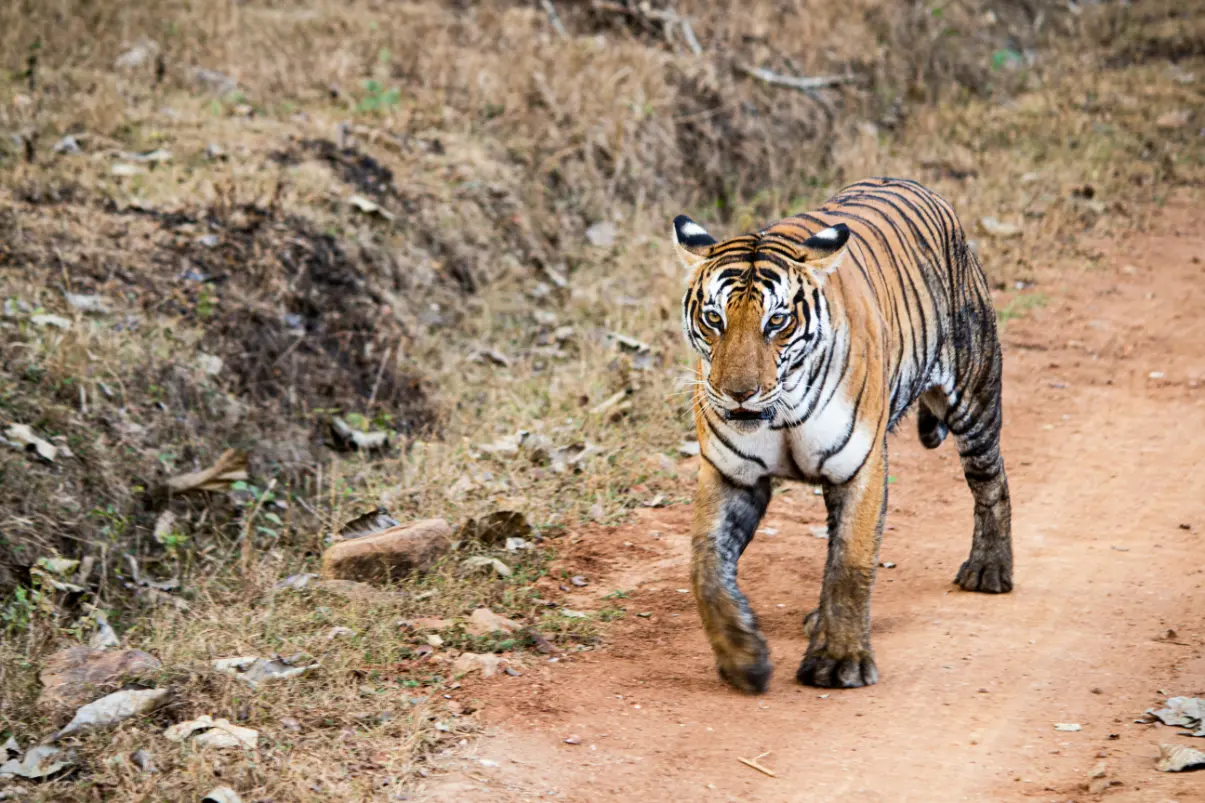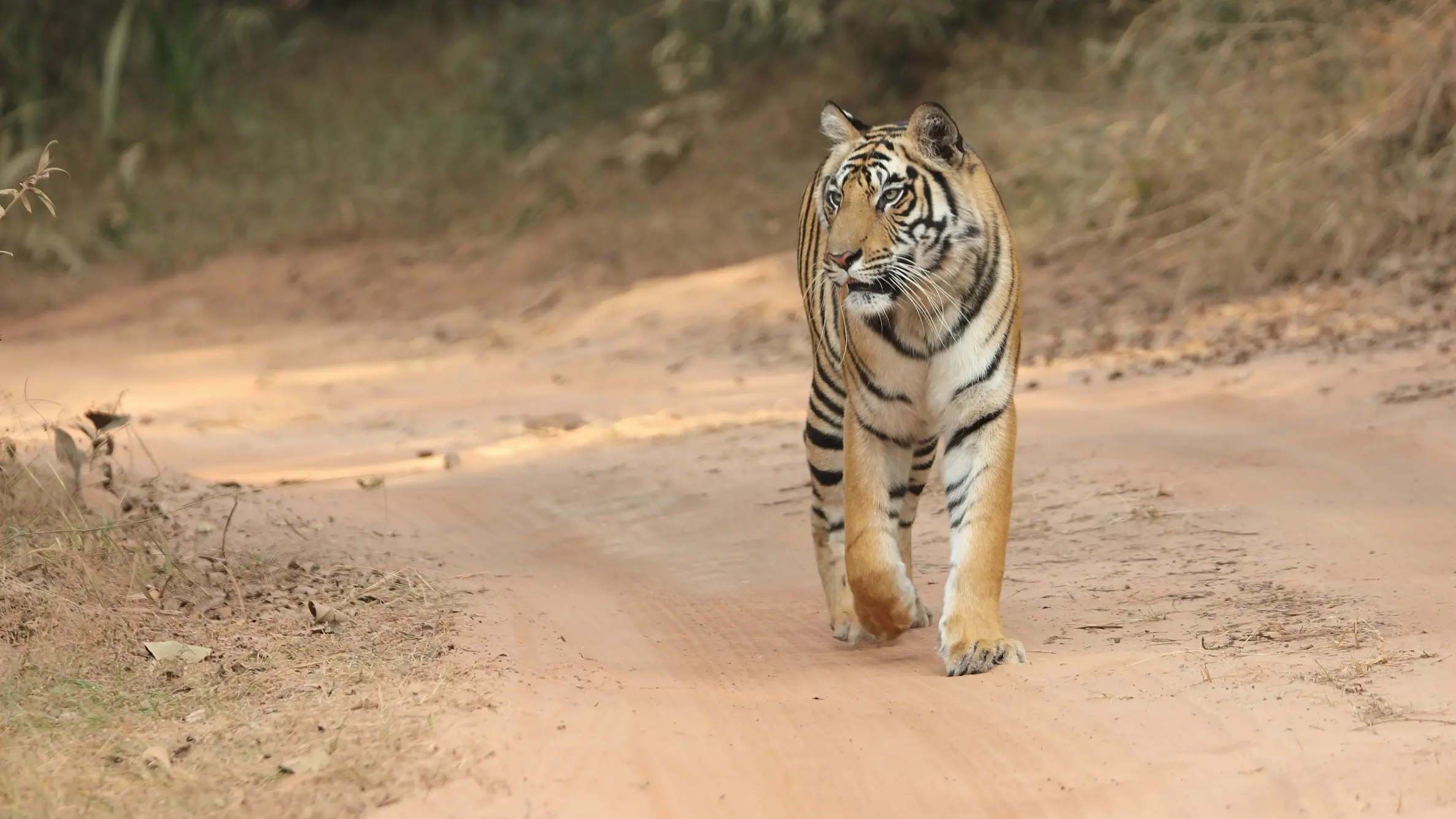Subscribe for more updates!
Stay updated with our latest design insights by entering your email below.

An Indian safari does not begin when the jeep enters the park. It begins at dawn, when the air is cool and still, and the forest slowly wakes. A peacock calls from the treetops. Langurs shuffle through the branches. Somewhere, hidden in the brush, a tiger waits for the day to unfold.
What makes India remarkable is not only the chance of seeing these animals, but the way the entire experience is shaped. You spend the morning following tracks through untamed terrain, guided by someone who can read the forest like a book. By afternoon you return to shaded courtyards, pools fringed with neem trees, and staff who know your name before you speak it. There is no rush here. The pace is measured, as if designed to remind you that the wilderness is not meant to be conquered, only witnessed.

Few experiences can compare to the moment when a tiger appears out of the tall grass. Safaris in India are not about guaranteed sightings, but about patience, quiet, and being present in the forest. In Ranthambore, the rustle of dry leaves often signals more than the wind. This is one of the best places for tiger spotting, particularly for foreign travelers who want both accessibility and the romance of old hunting grounds turned into conservation success stories.
Luxury lodges here balance comfort with the rawness of the wild. Early mornings bring strong coffee on your verandah before you head out in an open-top vehicle, guided by naturalists who know every track and call. A sighting is never rushed. You might wait an hour for a tiger to cross the path, and when it does, it feels both regal and fleeting. That blend of anticipation and privilege is what makes India wildlife safaris unforgettable.

If tigers are the stars of India’s forests, leopards are the quiet masters of disguise. They do not announce themselves. You might drive through Jawai in Rajasthan and see only granite hills and scattered villages, until someone points to a curve of spotted gold resting on a ledge. Leopards live close to people here, weaving themselves into the rhythm of pastoral life, yet they remain elusive.
The appeal of a leopard safari is in the stillness. You sit in silence, scanning rock faces at dusk as the light softens. The experience feels more private, almost meditative. There are fewer vehicles, fewer voices, and more space to simply watch. The camps in Jawai reflect this mood. Canvas tents with subtle luxury open to wide horizons, and evenings are spent around a fire, discussing the day’s sightings with naturalists who treat each glimpse of a leopard as a rare gift, never as routine.
This is a very different side of wild India tours. Less dramatic than a tiger chase, but no less powerful.

While tigers and leopards stir excitement, elephants bring something else entirely. To watch a herd move through the forest is to feel the weight of ancient rhythms. In southern India, particularly in parks like Nagarhole and Kabini, mornings often begin with the sound of branches breaking in the distance. Soon after, shapes emerge through the mist — mothers guiding calves, young bulls testing their strength, elders leading the way.
What makes elephant encounters remarkable is not only their size but their grace. They are both powerful and gentle, playful and protective. A safari here is rarely rushed. You linger at the edge of a lake as herds gather to drink, listening to the deep rumbles that pass between them. It feels like being invited into a quiet conversation carried out for centuries.
Luxury lodges in this region focus less on spectacle and more on immersion. Stays are designed to blend with the landscape, with verandahs that look out onto forest corridors. Evenings unfold slowly, with river cruises where elephants come to the banks at sunset. It is a softer, slower expression of the wild, and one that leaves you with a sense of connection rather than conquest.

The magic of India’s wilderness lies in its contrasts. Tigers command your full attention, leopards test your patience, and elephants invite you to slow down. Each encounter is different, yet all share a sense of intimacy that few destinations in the world can match.
For those planning India wildlife safaris, the choice is not only about which animals you hope to see, but also how you wish to experience them. Ranthambore offers drama and history woven together. Jawai offers solitude and the quiet poetry of leopards. Kabini and Nagarhole bring the gentle power of elephants. The best wild India tours find a rhythm between these landscapes, balancing adventure with the comfort of lodges that understand what luxury in the wild truly means — space, silence, and seamless service that never distracts from the forest itself.
To make the most of your journey, look for safaris led by naturalists who value conservation and storytelling as much as sightings. Ask about the timing of the seasons, for the experience of a dry summer morning is vastly different from a misty winter dawn. And give yourself time. The forest rarely rewards those in a hurry.
In the end, a safari in India is less about ticking off sightings and more about collecting moments. The stillness before a tiger appears, the shimmer of a leopard in fading light, the hush as elephants cross a river at dusk. These are the memories that linger, long after you leave the forest behind.
CURATED TOP DESTINATIONS